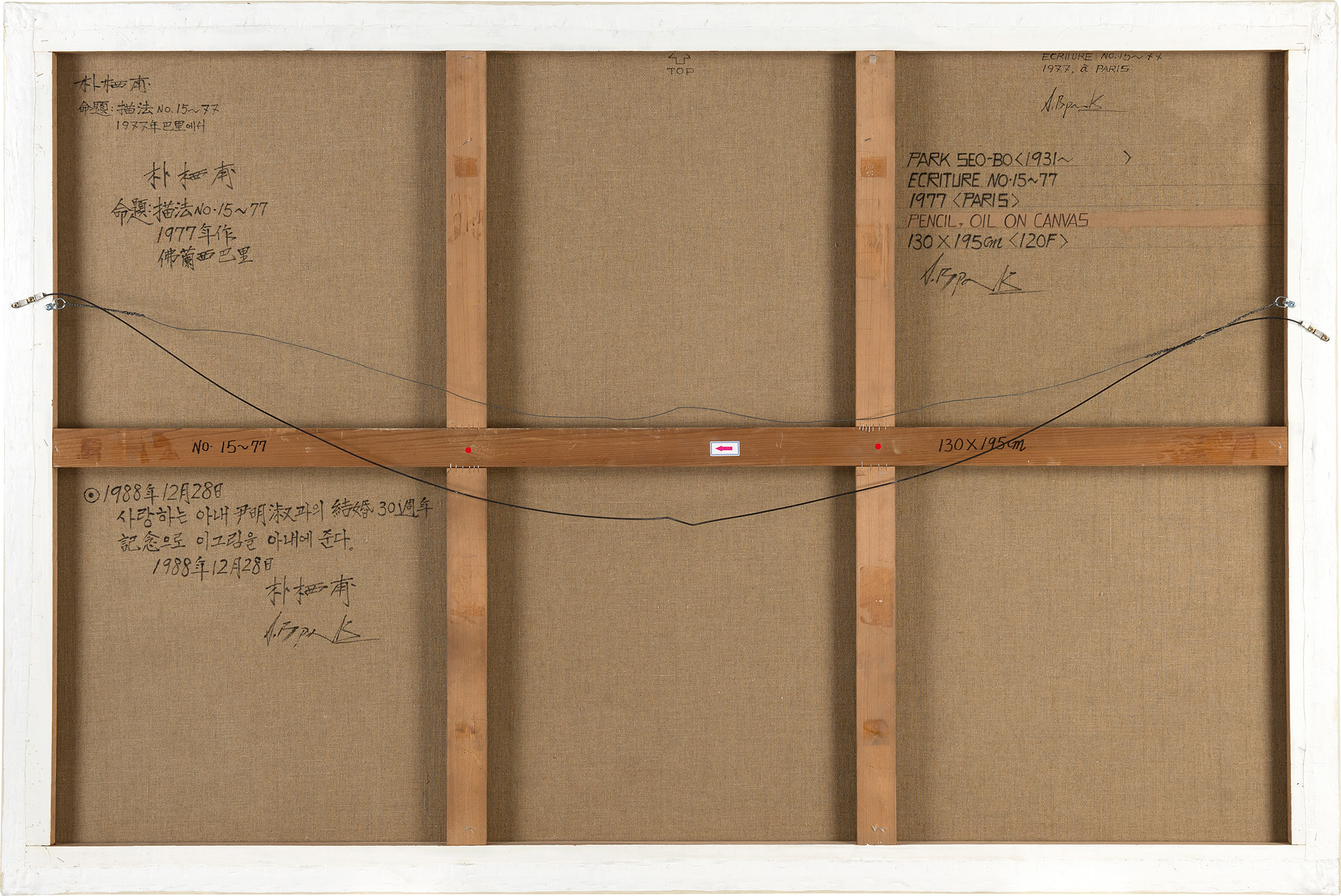



Property from a Private European Collection
14Ο◆
Park Seo-Bo
Ecriture No. 15
signed, titled, numbered, inscribed, dated variously ‘Park Seo-Bo "Ecriture No. 15-77" 1977 France Paris'; further dedicated and dated 'Park Seo-Bo “Ecriture No. 15-77” 1977 in Paris, France 28 December 1988 I give this painting to my dear wife, Yoon Myung-Sook, celebrating our 30th anniversary of marriage. 28 December 1988 Park Seo-Bo’ [in Hanja and English]’ on the reverse; further numbered ‘NO. 15-77’ on the stretcher
oil and pencil on canvas
130 x 195 cm. (51 1/8 x 76 3/4 in.)
Executed in 1977.